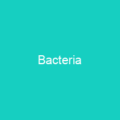Microorganisms: The Tiny Giants Shaping Our World
Imagine a world where tiny, invisible beings play a crucial role in everything from our health to the very air we breathe. These are microorganisms—tiny life forms that have been around for billions of years and continue to shape our planet in ways both subtle and profound.
The Dawn of Microbial Discovery
In 1673, Antonie van Leeuwenhoek peered through his simple single-lensed microscope and discovered a world previously unseen. His observations marked the beginning of microbiology as we know it today. Just think—what if he hadn’t looked? Would we still be in the dark about these microscopic giants?
Key Figures in Microbial History
Louis Pasteur, with his groundbreaking work, debunked the idea of spontaneous generation and supported the germ theory of disease. His experiments were like a lightbulb moment for understanding infections. And Robert Koch‘s criteria for establishing causality between microorganisms and diseases opened up new avenues in medical research.
The Diversity of Microorganisms
Microorganisms come in all shapes and sizes, from single-celled bacteria to complex multicellular fungi. They inhabit every corner of the Earth, from the deepest ocean trenches to the hottest volcanic vents. Their diversity is mind-boggling—imagine a microscopic world teeming with life!
Bacteria: The First Forms of Life
Single-celled bacteria were among the first forms of life on Earth, evolving around 3.5 billion years ago. They are prokaryotic, meaning they lack a nucleus and other membrane-bound organelles. Their ability to reproduce quickly and exchange genes freely has led to rapid evolution, including the development of multidrug-resistant pathogenic bacteria.
Eukaryotes: The Complex Life Forms
In contrast, eukaryotic microorganisms like fungi and protists have a more complex structure with membrane-bound organelles. Fungi can be unicellular or multicellular, while protists are highly diverse, including both single-celled and multicellular forms.
Plants: The Green Algae
The green algae, a large group of photosynthetic eukaryotes, play a vital role in the nitrogen cycle. Some green algae are classified as protists, while others like charophyta are classified with embryophyte plants. They can grow as single cells or in long chains and include various forms such as unicellular, colonial, coccoid, and filamentous.
Extremophiles: Surviving the Harsh Conditions
Microorganisms like extremophiles have adapted to some of Earth’s harshest environments. They can survive in extreme temperatures, high salt concentrations, acidic or alkaline conditions, and even in a vacuum. These tiny survivors extend terrestrial life into the hydrosphere, crust, and atmosphere, making them invaluable for biotechnology and potential extraterrestrial life.
The Role of Microorganisms in Nature
Microorganisms play critical roles in Earth’s biogeochemical cycles, such as decomposition and nitrogen fixation. They are essential for the health of ecosystems, from breaking down organic matter to supporting plant growth through symbiotic relationships. Their impact on our planet is immense.
The Nitrogen Cycle
The nitrogen cycle in soils depends on diazotrophs, which fix atmospheric nitrogen into a form usable by plants. This process is crucial for the health of ecosystems and agriculture. Microorganisms create a rhizosphere that supports many other microorganisms through signals and cues.
Microbial Applications
From producing food to treating wastewater, microorganisms have countless applications in our daily lives. They are used in fermentation processes to make products like yoghurt, cheese, beer, wine, bread, and more. Microbes also clean up contaminated water through respiration, anaerobic digestion, and production of methane gas.
Biotechnology and Industry
In the realm of biotechnology, microorganisms are essential tools in creating various chemicals, enzymes, and bioactive molecules. They have applications in research as model organisms, agriculture, aquaculture, and numerous industries. Their use in producing ethanol, biogas, and liquid fuels through fermentation is just one example of their versatility.
Microbes in Medicine and Beyond
Microorganisms are not only beneficial but also can be harmful. They are the causative agents of many infectious diseases, including bacterial, protozoan, and fungal pathogens. However, they are also essential for our health, making nutrients available to plants, producing hormones for growth, stimulating plant immune systems, and triggering stress responses.
Hygiene and Microbes
Hygiene practices eliminate microorganisms from surroundings by reducing bacteria levels through cooking, cleanliness, and preservation methods. These practices are crucial in maintaining public health and preventing the spread of diseases.
Fictional Worlds and Microbes
In fiction, microbes have been featured as heroes in films like Osmosis Jones and War of the Worlds. They remind us that these tiny beings are not just scientific curiosities but integral parts of our world.
The Importance of Microorganisms in Our Lives
Microorganisms, with their vast diversity and adaptability, continue to shape our understanding of the environment and human health. From the first forms of life on Earth to modern biotechnology, these tiny giants play a crucial role in almost every aspect of our lives. They are not just invisible but essential.

You want to know more about Microorganism?
This page is based on the article Microorganism published in Wikipedia (retrieved on January 26, 2025) and was automatically summarized using artificial intelligence.






